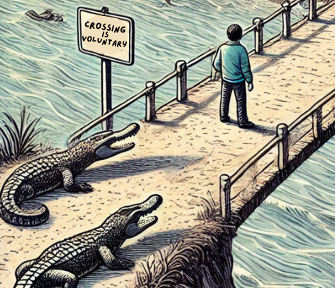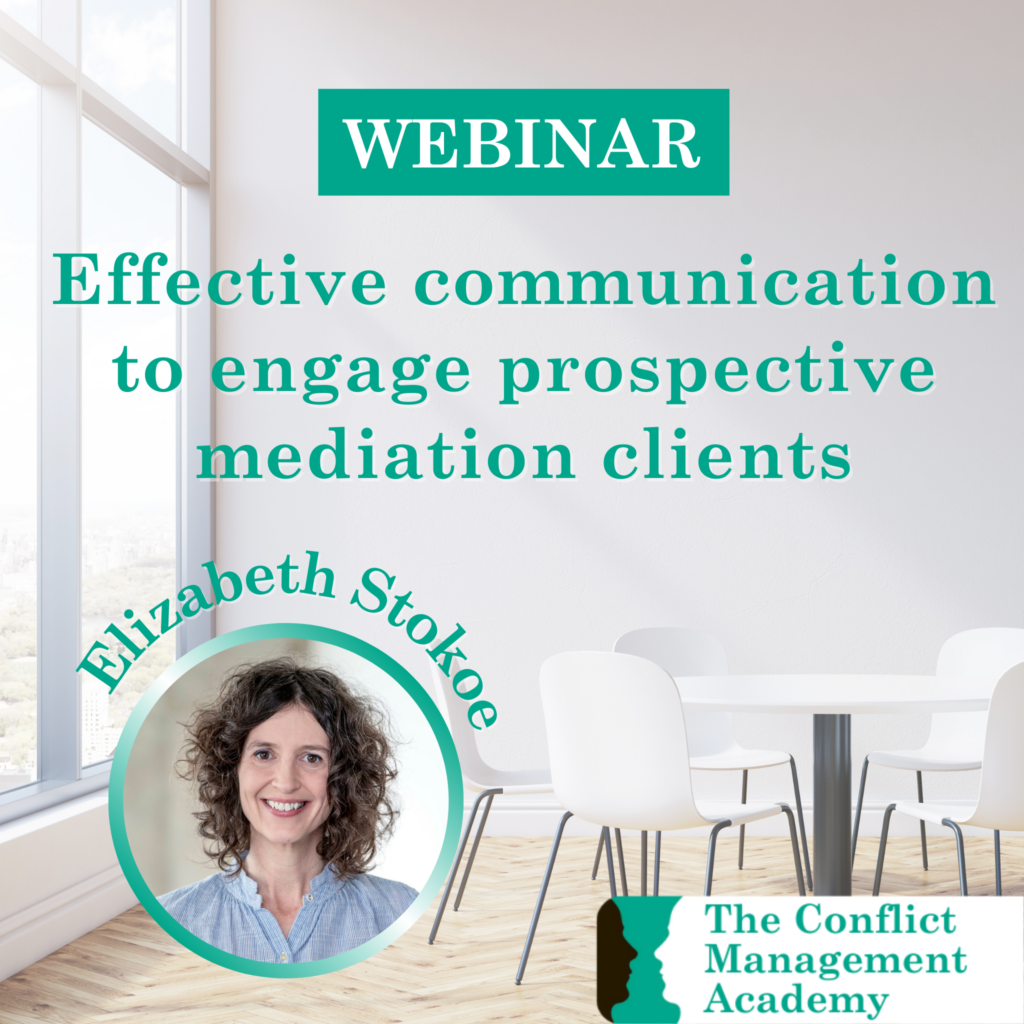In one of our recent masterclasses at The Conflict Management Academy, we discussed some of our recent learning from Dr Emily Skinner and Professor Elizabeth Stokoe, and workshopped improved ways to describe what we do. Here’s a summary of what we came up with.
Thanks to participants (Debra Farrelly, Deb Black, Peter Hanson, Nurit Zubery, Lara Bishov, Georgia Hurst, Esther Schultink, Clare Robinson, Katie Stark, and Mary Brindley) for contributing ideas for this article.
Mediation’s visibility problem
People rarely think of mediation when they encounter conflict. Unlike visiting a doctor when they feel unwell, individuals in conflict do not instinctively think, “I’ll make an appointment with a mediator.”

Many are not even aware that mediation is an option unless a court suggests it. Dr. Emily Skinner’s research has found that once people learn about mediation, they are often interested—but awareness remains low.
This creates a paradox: there is a high social need for mediation, yet low market demand because of a general lack of understanding.
Even when people are aware of mediation, they often have a narrow or incorrect view of it, which may not align with what individual practitioners actually offer. Most members of the public also do not understand that within the broad concept of “mediation” there are a very wide range of approaches.
Additionally, research by Dr. Skinner and Professor Elizabeth Stokoe has shown that mediators struggle to explain or ‘sell’ mediation effectively.
Why mediators struggle to market their services
One major issue is that mediators tend to describe their work by focusing on what they do not do. We often emphasize:
“We don’t take sides.”
“We can’t make decisions for you.”
“It’s voluntary, we can’t make anyone participate.”
While these statements align with mediation ethics, they fail to appeal to potential clients. As Professor Elizabeth Stokoe commented, “It’s a great philosophy, but a lousy sales pitch”.

People in conflict often want someone to fix their problem, advocate for them, or at least take a stance on what’s right. They don’t want to be told (in effect) that they are going to have to figure it out by themselves by talking to the other person involved.
While I’m not suggesting that mediators should do any of these things, we can reframe our mediation explanation in a way that is more likely to engage prospective clients’ interest. We can make mediation sound much more appealing if, instead of telling them what we don’t do, we the benefits and value that mediation provides.
We can also frame mediation’s benefits using language that is likely to reflect what clients actually want when they seek help with conflict.
What clients in conflict want
In the CMA masterclass, we brainstormed ideas of what clients might be seeking in relation to their conflict. Participants suggested that people in conflict typically seek (in no particular order):
Peace of mind
To avoiding having to go to court
Something better than just doing nothing
A roadmap for the future
A way to move past a stalemate
Relief from the negative effects of conflict
Clarity about the situation
More choices for moving forward
A sense of being seen, heard, and understood
Resources for making informed decisions
A sense of control over the situation
An opportunity to vent
Help in finding the right words to express their concerns
Protection from the other person’s challenging emotions or behaviours
In many ways mediation can provide these benefits—but we don’t always explain it in ways that resonate with clients.
Reframing how we talk about mediation
Let’s talk about what we do, and how it benefits clients. We can emphasize their needs and how we can meet them. It also helps if we emphasize their agency and choice as things of benefit to the client (rather than our lack of advice-giving or decision-making).
For example, instead of saying;
“We are impartial, so we don’t take sides.”
We can say:
“I will help you express what’s important to you and make sure the other person truly listens and understands.”
While we will obviously be saying the same thing to the other person or people involved in the mediation, this is much less of interest to a prospective client at the enquiry stage of contacting a mediator.
Instead of saying:
“Mediation is voluntary,”
We might say:
“You have control over how and whether to engage in this process. My role is to help you explore all available choices, so you can decide what’s best for you.”
Instead of saying:
“I can’t make either of you reach an agreement,”
We could say:
“My job is to help you have a productive conversation and explore options. You decide what works best for you, but I will help you to make sure you have all the information you need to make an informed decision.”

Describing the mediation process and mediator interventions clearly
Clients often feel apprehensive about mediation because they don’t know what to expect. We can make the process clearer by explaining:
The structure of the mediation (e.g., joint sessions, private meetings, discussion topics).
Our interventions and techniques (e.g., summarizing, asking clarifying questions, helping articulate concerns).
The choices they will have throughout the process (e.g., participation options, agreement terms, possible outcomes).
For example, instead of vaguely saying:
“I’ll help you have a conversation,”
We can say:
“I will ask questions to help clarify meaning, ensure that you’re fully expressing what’s important to you, and make sure your words are understood by the other person.”
“I will also make sure that you get to ask any questions you have for the other person, and I can also ask them clarifying questions to draw out further information that might be helpful to you.”
“I will often summarise what each of you have said so that you can check that you have each understood one another. I’ll also invite you to correct anything that I have misunderstood and to ask clarifying questions to ensure that you both have all the information you need to make decisions about the future.”
Addressing common client concerns
Voluntariness
For many people, their participation in mediation doesn’t actually feel voluntary, so when we describe it in this way, prospective clients can feel that you are being disingenuous. For various reasons, prospective clients have limited options to avoid participating. They feel coerced into it by a manager, court, or HR department. Instead of speaking about voluntariness, it is more helpful to talk to them about identifying the choices available to them, and the likely consequences of those choices. For example:
“In any conflict situation, the people involved have choices, and each of these lead to different outcomes. While you can choose not to participate in mediation, it is important that you think through the pros and cons of making that choice. If you do choose to participate, you also have choices about how to do so, and I will support you to figure out what might work best for you throughout the process.”

For other people, being told that mediation is voluntary can almost encourage avoidance as an easy escape route, often by blaming the other side. In Professor Elizabeth Stokoe’s research, she found that prospective clients often responded to an intake officer explaining that mediation was voluntary, by stating that “oh, well, the other person is unlikely to agree, so I guess mediation is not going to work”.
A way to be realistic about voluntariness, and to avoid inadvertently suggesting withdrawal as an easy way out, is by saying something like:
“You are in control of how you engage in this process. If at any time it doesn’t seem helpful, let’s talk about what’s working and what’s not, so we can find a way forward that makes sense for you.”
Impartiality
Clients sometimes worry that an “impartial” mediator won’t support them at all. Professor Elizabeth Stokoe also pointed out that prospective clients often hear impartiality as that the mediator is not supporting anyone. Accordingly, it is helpful to frame impartiality in the sense that the mediator will actively support both parties. For example:
“My role is to make sure both of you feel heard and respected. I will ensure that no one dominates the conversation and that each of you has the opportunity to express what matters most to you.”
Stress of having to talk to the other person
Clients often feel very stressed about sitting with the people they are in conflict with and having a conversation. Again, mediator’s can explicitly describe how they can help clients deal with this.
“I know when people are in conflict and sitting in front of the person they are in conflict with, it can make them stressed and not think or speak clearly. My role is to ensure that you have the time and space to think, speak and listen so that you can make the right choices moving forward. I’ll do this by summarising, reflecting back people’s emotions, asking questions about what is said (and sometimes about what is not said, or what seems to be implied). My job is to help you keep track of what’s going on, and to help you gather as much information as possible to make decisions about the future.”
Being subjected to challenging behaviours
Clients are also nervous about being pushed into something they don’t want, or being the subject of challenging behaviour by the other people in the mediation. Again, mediators can reassure them by saying something like:
“I will make sure that you are not forced to say or do anything that you do not wish to do. I will be alert to challenging behaviour and have a plan for responding to ensure everyone is safe and able to make their own choices.”
Selling mediation without ‘selling’
Describing mediation in the way I’ve suggested is not about aggressive sales tactics or lying by omission. Rather, it’s about reframing the way we describe our service in a way that connects with what clients actually want.
We should:
Focus on benefits rather than process mechanics.
Use client-centered language instead of mediator jargon.
Describe what we actively do rather than what we don’t do.
Address concerns proactively, showing that mediation offers support and structure.
Use language that emphasizes choice.
By shifting how we describe our work, we can increase understanding, reduce resistance, and ultimately encourage more people to choose mediation as a constructive way to resolve their conflicts.


To see Dr Emily Skinner’s webinar click here: https://conflictmanagementacademy.com/webinar-rebranding-conflict-registration/

To see Professor Elizabeth Stokoe’s webinar click here: https://conflictmanagementacademy.com/wod-explaining-and-being-impartial-registration/

